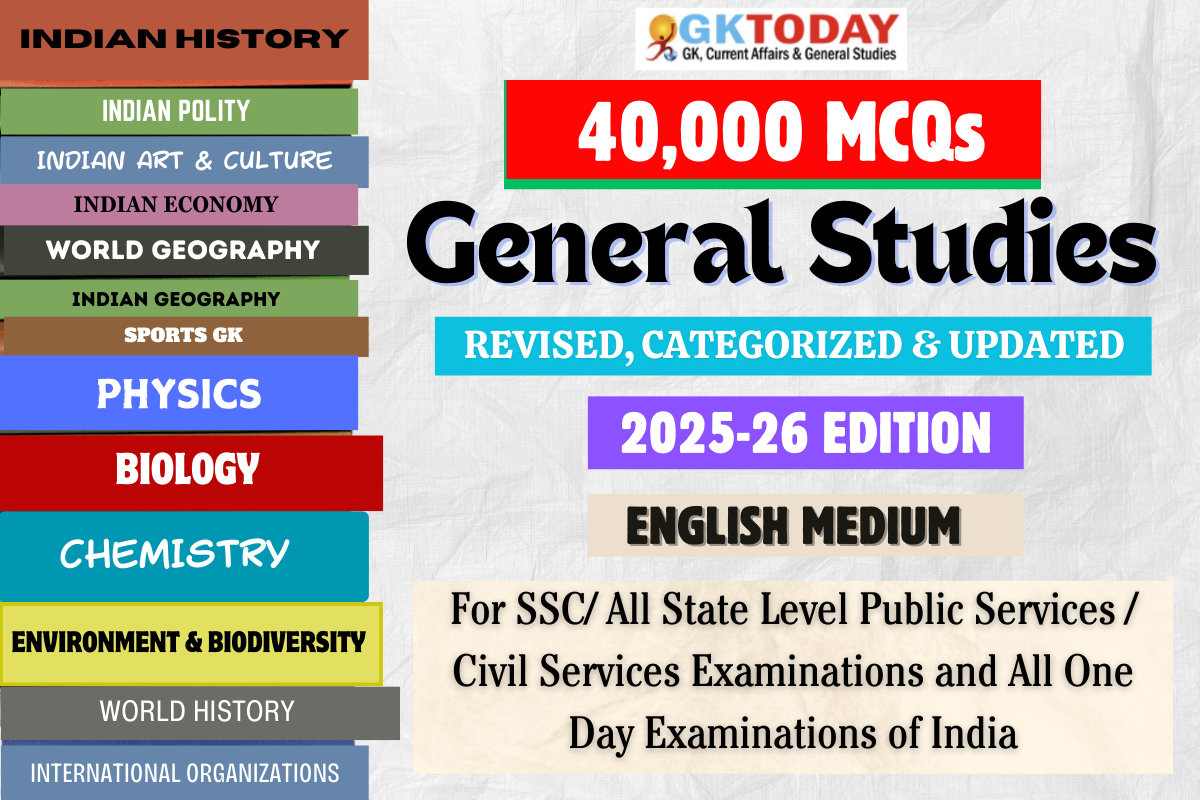Indian Polity & Constitution MCQs
Indian Polity & Constitution Objective / Multiple Choice (MCQs) Questions for Preparation of SSC-CGL, UPSC Civil Services, NDA, CDS, Railways and State Level Public Services Examinations.
41. The Conservation of Foreign Exchange and Prevention of Smuggling Activities Act was passed in which year?
[A] 1971
[B] 1972
[C] 1973
[D] 1974
Show Answer
Correct Answer: D [1974]
Notes:
The Conservation of Foreign Exchange and Prevention of Smuggling Activities Act was passed in 1974. It was passed during the administration of Indira Gandhi in order to retain foreign currency.
42. When was the first Central Legislative Assembly constituted ?
[A] 1922
[B] 1923
[C] 1921
[D] 1920
Show Answer
Correct Answer: D [1920]
Notes:
The Central Legislative Assembly was a legislature for India created by the Government of India Act 1919 from the former Imperial Legislative Council, implementing the Montagu-Chelmsford Reforms. It was formed in 1920.
43. What is the minimum age to qualify for Lok Sabha Elections?
[A] 25 years
[B] 30 years
[C] 21 years
[D] 18 years
Show Answer
Correct Answer: A [25 years]
Notes:
Article 84 (b) of Constitution of India provides that the minimum age for becoming a candidate for Lok Sabha election shall be 25 years. Similar provision exists for a candidate to the Legislative Assemblies vide Article 173 (b) of the Constitution.
44. Which of the following does not come under legislative control over administration ?
[A] Zero hour
[B] Adjournment motion
[C] Budget session
[D] Formulation of a Bill
Show Answer
Correct Answer: C [Budget session]
Notes:
There are several ways in which Parliament exercises control over public administration. Some of the important means of control are: control of administrative policies; control of appropriation; audit and report; interpolations-parliamentary questions; zero hour discussion, calling attention motions, short note discussions, adjournment motions; debates and committees of parliament.
45. Which motion is moved by a Member of Parliament to draw the attention of Executive for discussing a definite matter of public importance?
[A] Privilege motion
[B] Calling attention Motion
[C] Adjournment motion
[D] No-confidence motion
Show Answer
Correct Answer: C [Adjournment motion]
Notes:
Adjournment motion is moved by a member when it is desired to draw the attention of the Executive for the purpose of discussing a definite matter of urgent public importance. It is an extraordinary procedure which, if admitted, leads to setting aside the normal business of the House for discussing a definite matter of urgent public importance.
46. Who among the following has the power to prorogue the Lok Sabha?
[A] Speaker of Lok Sabha
[B] Chairman of Rajya Sabha
[C] President of India
[D] Chief Justice of India
Show Answer
Correct Answer: C [President of India]
Notes:
Prorogation means the termination of a session of the House by an order made by the President under article 85 (2) (a) of the Constitution. Pror-ogation terminates both the sitting and session of the House. Usually, within a few days after the House is adjourned sine die by the presiding officer, the President issues a notification for the proro-gation of the session. However, the President can also pror-ogue the House while in session.
47. Rule_____ (of the Rules of Procedure and Conduct of Business in Lok Sabha) does NOT involve a formal motion before the Parliament house, hence no voting can take place after discussion on matter under this rule.
[A] 158
[B] 186
[C] 149
[D] 193
Show Answer
Correct Answer: D [193]
Notes:
Discussion under Rule 193 does not involve a formal motion before the House. Hence no voting can take place after discussion on matters under this rule. The Member who gives notice may make a short statement and such of the Members as have pre-viously intimated to the Speaker, may be permitted to take part in the discus-sion. The Member who raises the discussion has no right of reply. At the end of the dis-cussion, the Minister con-cerned gives a brief reply.
48. The Indian Constitution provides the country with three categories of civil services, namely :
[A] all India, central and state services
[B] administrative, railway and police services
[C] administrative, police and revenue services
[D] administrative, police and foreign services
Show Answer
Correct Answer: D [administrative, police and foreign services]
Notes:
The constitution under Article 312 provides for the establishment of three all-India Civil Services: Indian Administrative Service, Indian Police Service and Indian Forest Service (IFS). All appointments to All India Civil Services are made by the President of India.
49. As per the Constitution of India, Panchayats at the intermediate level may NOT be constituted in a State having a population not exceeding :
[A] Thirty lakhs
[B] Forty lakhs
[C] Ten lakhs
[D] Twenty lakhs
Show Answer
Correct Answer: D [Twenty lakhs]
Notes:
Panchayat” means an institution (by whatever name called) of self-government constituted under article 243B of the Indian Constitution for the rural areas. Panchayats at the intermediate level may not be constituted in a State having a population not exceeding twenty lakhs
50. In which year did the first amendment of Indian Constitution take place?
[A] 1951
[B] 1950
[C] 1948
[D] 1949
Show Answer
Correct Answer: A [1951]
Notes:
The First Amendment of the Constitution of India was enacted in 1951. It made several changes to the Fundamental Rights provisions of the constitution. It provided against abuse of freedom of speech and expression, validation of zamindari abolition laws, etc.

